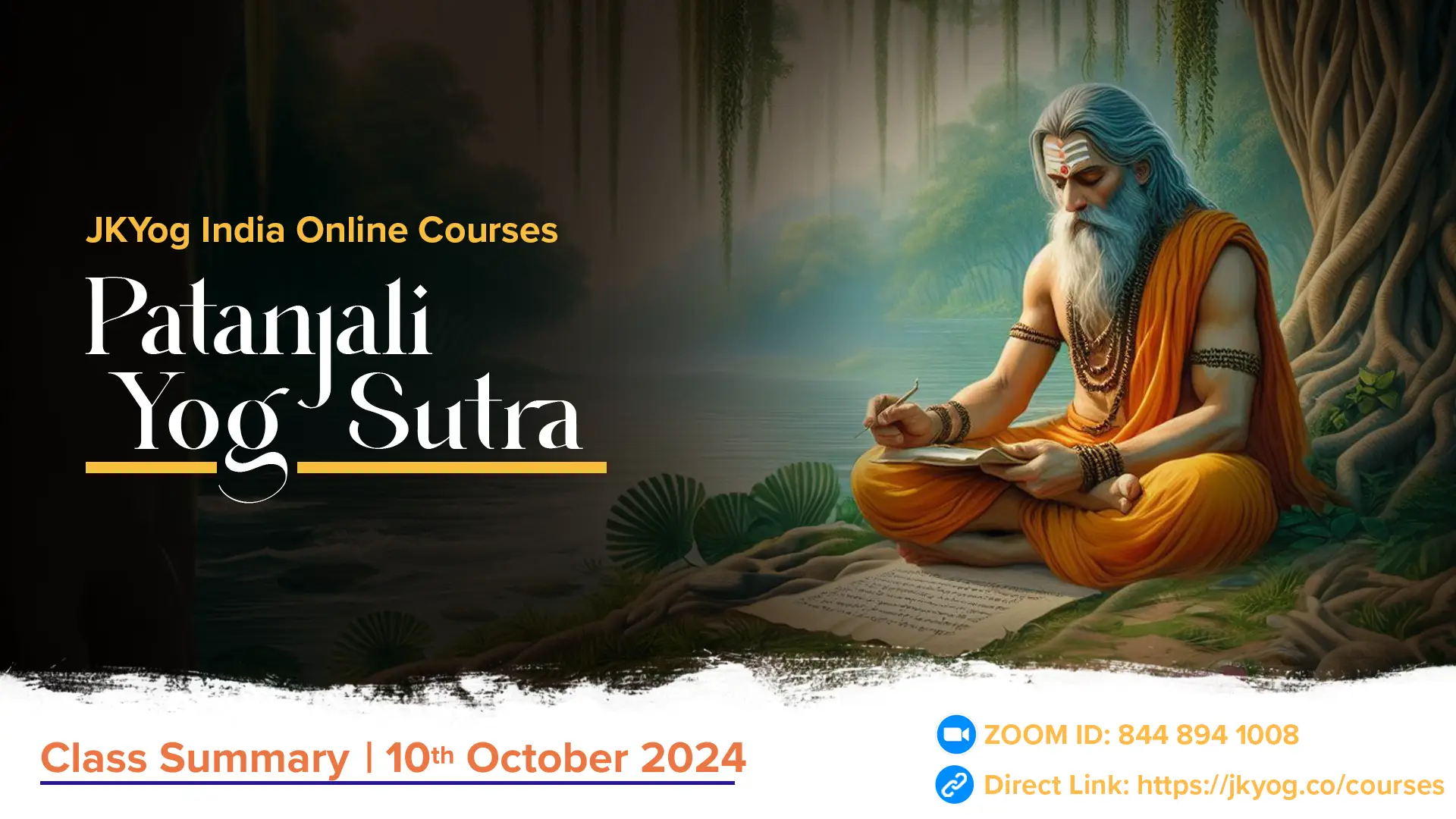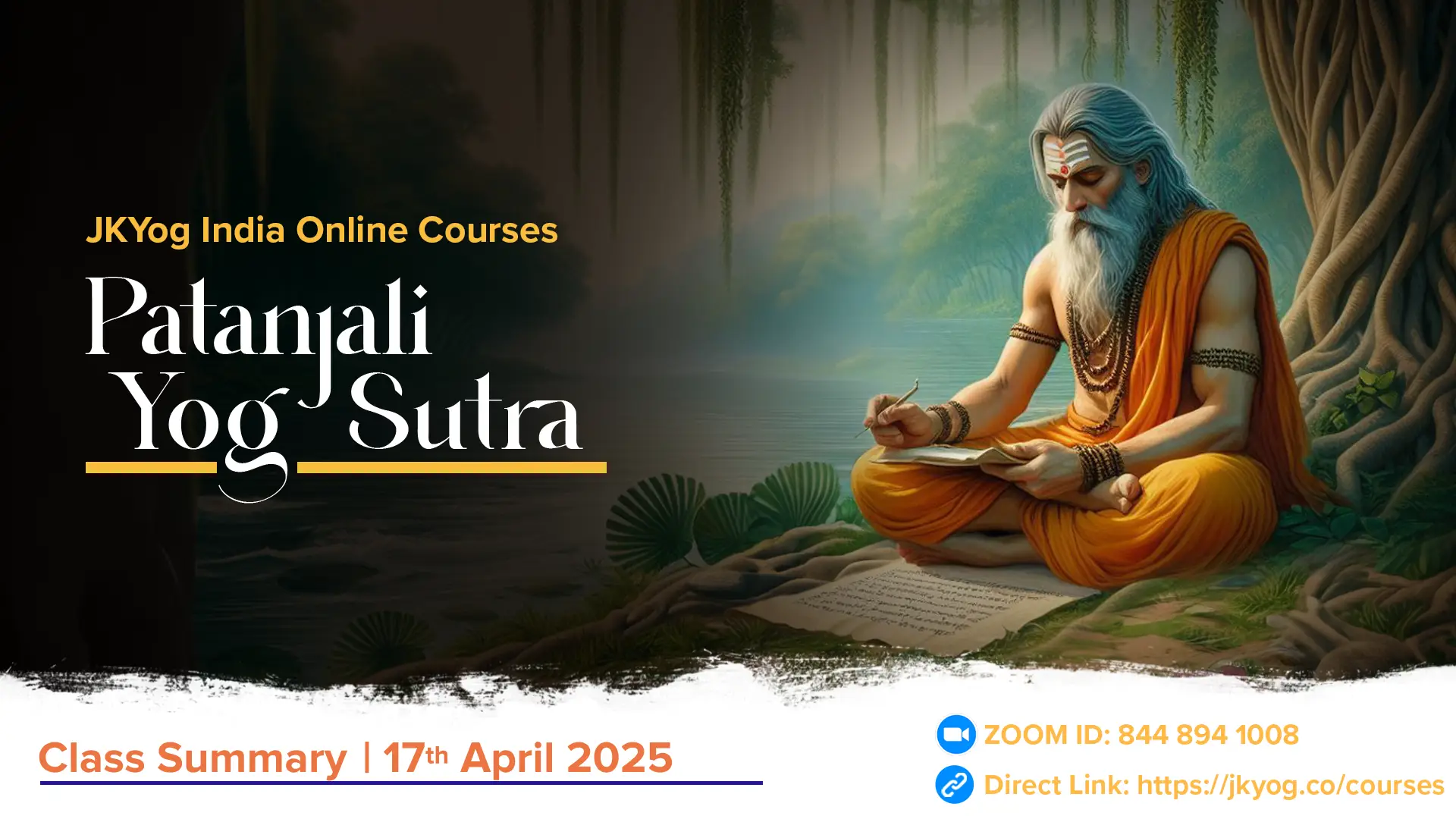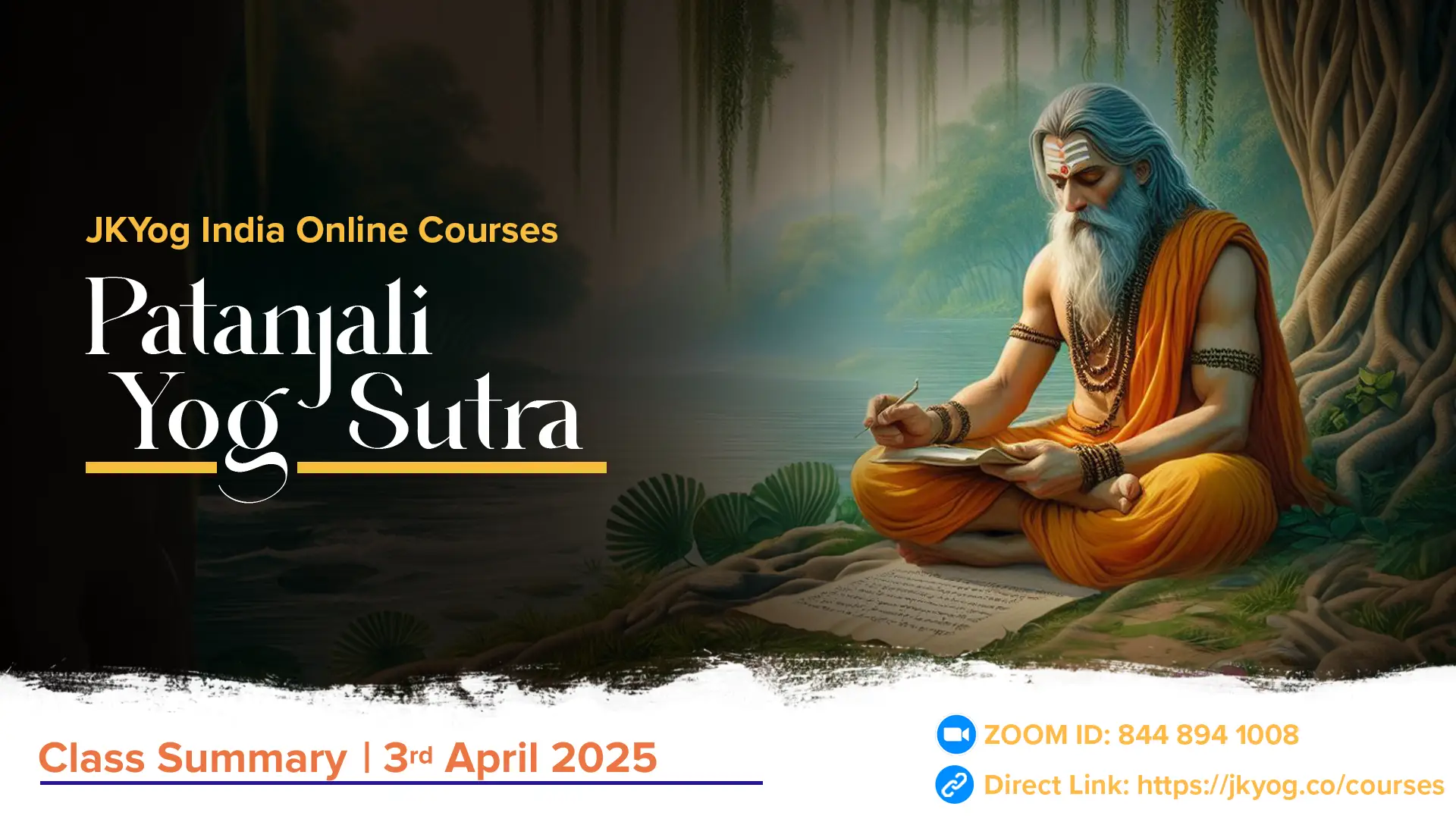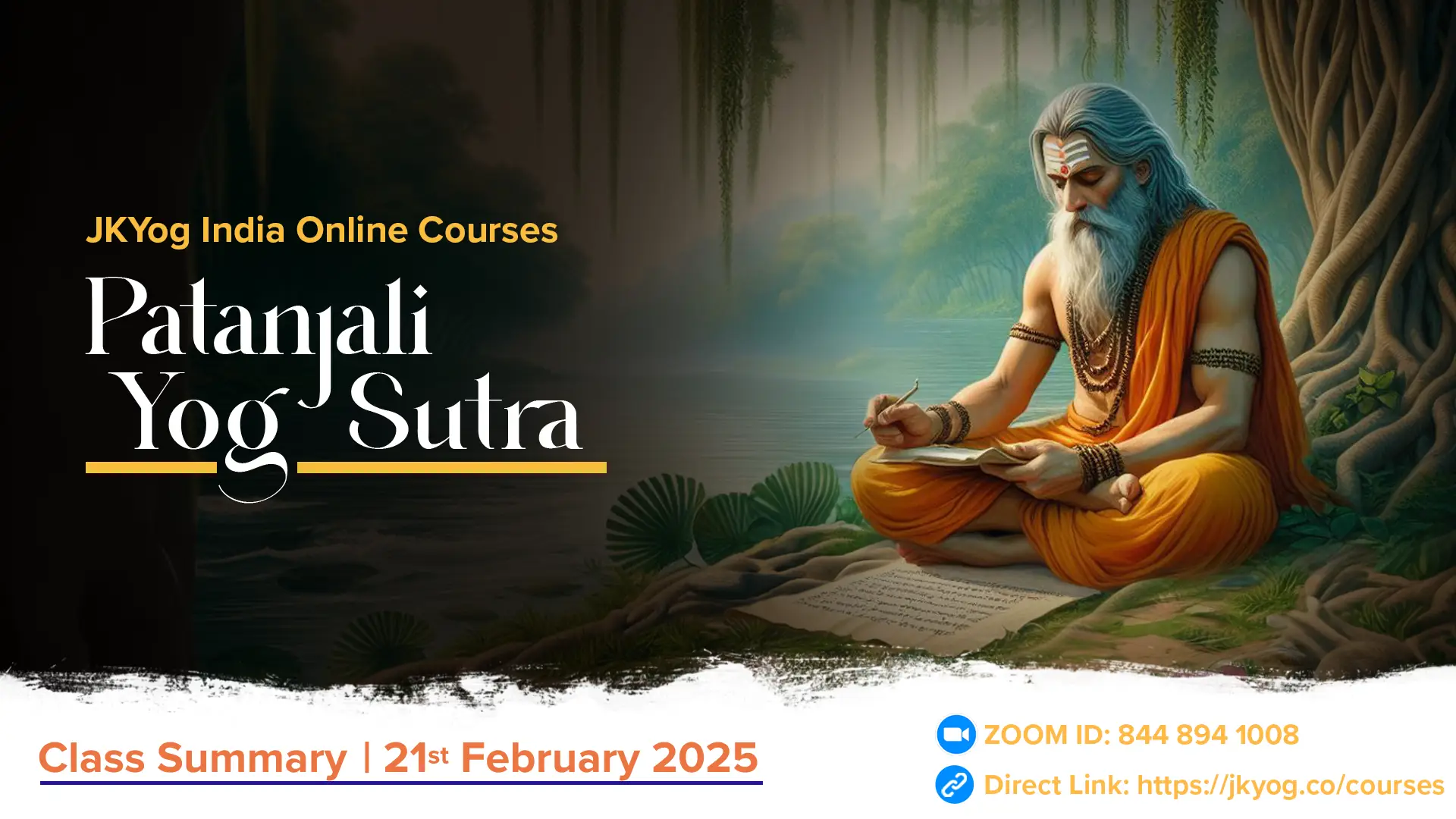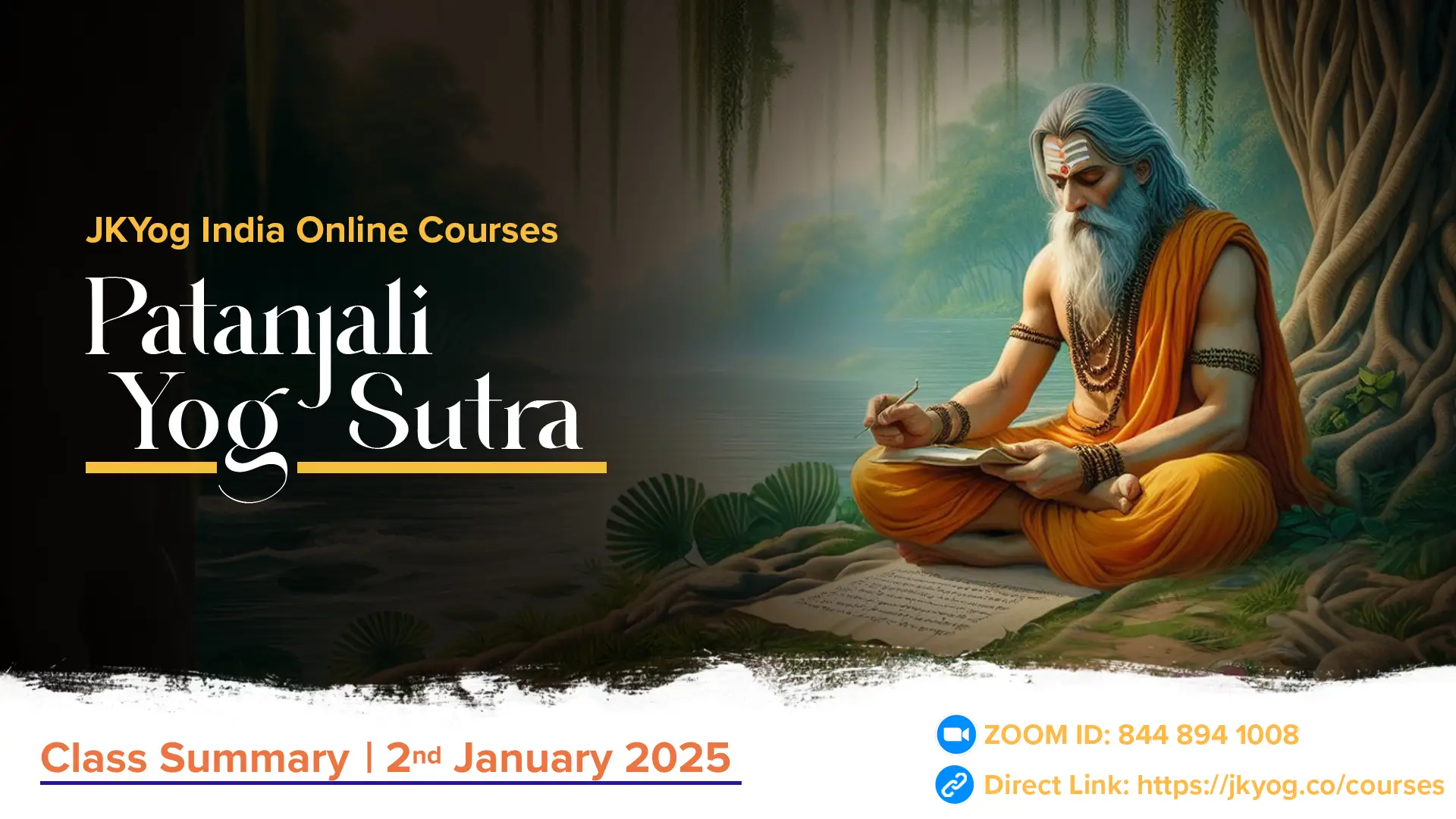धारणासु च योग्यता मनसः || 2.53 ||
dhāraṇāsu ca yogyatā manasaḥ || 2.53 ||
Prāṇāyāma Prepares the Mind for Dhāraṇā
Prāṇāyāma provides the ability for the mind to become fit for concentration.
The Elephant imagery
Sage Patañjali says that prāṇāyāma helps the mind to go for dhāraṇā. Dhāraṇā may be translated as concentrative meditation. It also signifies the retention of the power of concentration.
The mind is like an elephant. An elephant is strongly built but it yields to the command of a small built mahout who has a goad in his hand and who guides the elephant. The elephant of the mind can be guided by the mahout of dhāraṇā with the help of the goad of prāṇāyāma.
Cause and effect
Now, effort and output are like cause and effect. For every effort, there should be an output, a result. Prāṇāyāma is an effort and the dhāraṇā is the output. Effective prāṇāyāma leads to effective concentration. It is not necessary that every prāṇāyāma session must lead to dhāraṇā. But if you want to reach the dhāraṇā stage, start with the prāṇāyāma. Just as we start with the cotton, then make it into threads and then weave the cloth, we start with the prāṇāyāma, weave through dhāraṇā and finally reach the samādhi stage.
Yogic practices like yama, niyama, and āsana along with prāṇāyāma.
Why this stepped path? Because the mind is after all material. How can we take it to the divine stage? It is difficult for the mind to concentrate on God directly since it is connected to the material world most of the time. Just as a man needs a space suit to go into space, for the material mind to think of divinity a divine suit is required. Prāṇāyāma provides it. Just as the mind requires the services of the sense organs for its contact with the outer world, it requires the services of prāṇāyāma for contacting the inner spiritual world. It is not the task of prāṇāyāma alone to prepare the mind for the higher realms of spirituality; it is the combined effort of all the yogic practices like yama, niyama, and āsana along with prāṇāyāma.
Mind is like a chariot
Why are they all needed? Because the mind is like a chariot. It is pulled by the horse of the sense organs for travel in the external world. Similarly, we require the horses of yama, niyama, āsana, prāṇāyāma, and pratyāhāra to traverse into the inner space. The outer journey is easy but the results are momentary happiness and pain only. On the other hand, the internal journey is difficult but the result is everlasting joy. Both the itineraries are available for us. It is for us to choose the best one, obviously, the inner journey. Just as we leave the vehicle after reaching the destination, we can transcend the mind once we realize the supreme joy from inside
Yoke the horse of prāṇāyāma to the chariot of the mind.
Having first yoked the horses of yama, niyama, and āsana, it is now time to yoke the horse of prāṇāyāma to the chariot of the mind, for the inner journey. But there is a big roadblock, i.e., the ego. To remove it, bhakti is necessary. Divine grace is necessary. Bhakti and divine grace can permanently end our ignorance of identification with the mind.
Mind is, after all, the material chariot and we are the masters sitting on the chariot. When that identification is lost, the ego will be like a fish out of water. It will disappear and so the roadblock is removed.
Now the chariot can move fast and reach its destination, namely, the feet of God. The task often seems insurmountable, but if we believe Sage Patañjali’s many references to light within us and surrender to God, we are encouraged to continue the effort.
Summary: JKYog India Online Class- Patanjali Yog Sutra [English]- 10.10.2024

